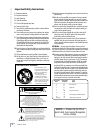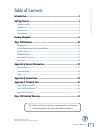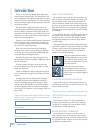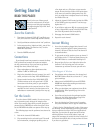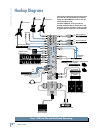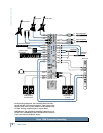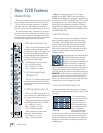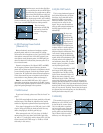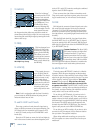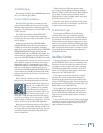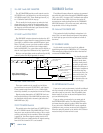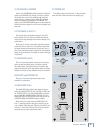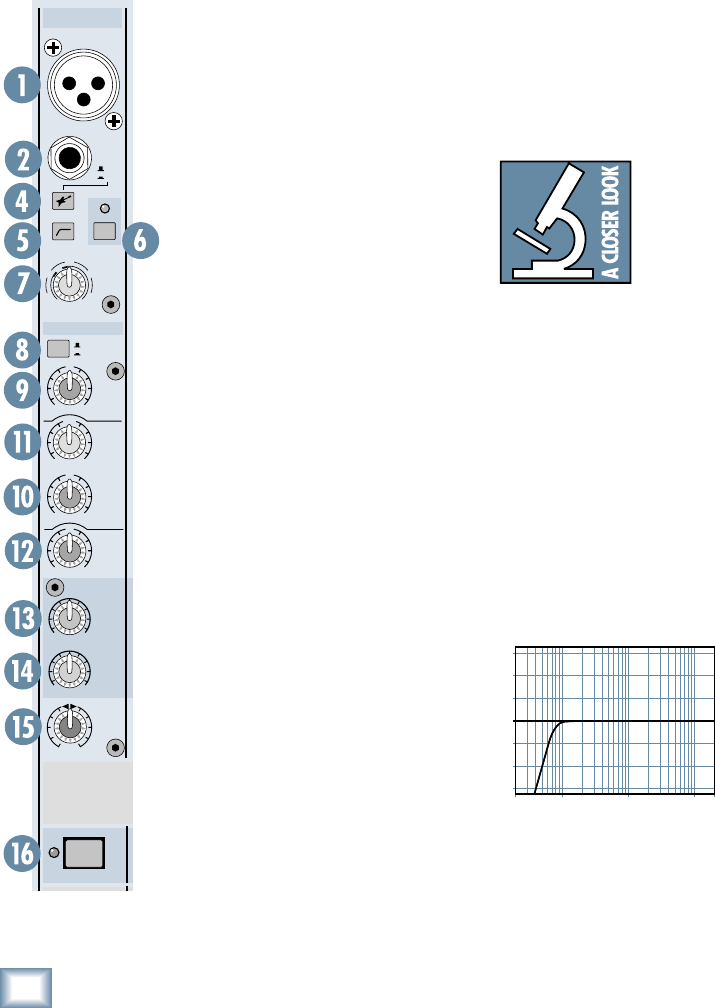
10
ONYX 1220
ONYX 1220
Onyx 1220 Features
Channel Strips
There are two kinds of channel strips on the Onyx 1220:
Mono and Stereo. The mono channel strips (channels
1-4) have mic and line input connectors. In addition,
channels 1 and 2 have high-impedance instrument
inputs so you can connect a guitar directly to the mixer.
The stereo channel strips (channels 5-12), have two
line input connectors per channel strip, left and right.
The stereo path is maintained throughout the channel
strip, sharing the channel’s controls (the controls work
on both left and right signals at the same time).
1. MIC Input (Channels 1-4)
This is a female XLR connector, which
accepts a balanced microphone input
from almost any type of microphone. The
microphone preamps feature our new
Onyx design, with higher fi delity and
headroom rivaling any standalone mic
preamp on the market today.
The XLR inputs are wired as follows:
Pin 1 = Shield or ground
Pin 2 = Positive (+ or hot)
Pin 3 = Negative (– or cold)
2. HI-Z Instrument Input
(Channels 1-2)
This is a 1/4" connector, which accepts
an unbalanced instrument-level input
signal from a high-impedance instrument
like a guitar.
3. LINE Input (Channels 3-12)
This is a 1/4
"
TRS connector, which ac-
cepts a balanced or unbalanced line-level
input signal from almost any source.
When connecting a balanced signal to
the LINE inputs, wire them as follows:
Tip = Positive (+ or hot)
Ring = Negative (– or cold)
Sleeve = Shield or ground
When connecting an unbalanced
signal, wire them as follows:
Tip = Positive (+ or hot)
Sleeve = Shield or ground
Note: For the stereo channels 5-12, if a signal is
plugged into the LEFT (MONO) side and nothing is
plugged into the RIGHT side, the signal is automatically
connected to both LEFT and RIGHT sides. This is called
jack normalling. As soon as something is plugged into
the RIGHT side, the normalled connection is broken
and the LEFT and RIGHT inputs become stereo inputs
(LEFT goes to the LEFT MAIN OUT and RIGHT goes to
the RIGHT MAIN OUT).
4. MIC/HI-Z Switch
Channels 1 and 2 have an extra button for switching
between the MIC and HI-Z inputs. When the button
is out (MIC), the XLR MIC input is used and the HI-Z
input is disconnected. When the button is pushed
in (HI-Z), the 1/4" HI-Z input is used and the XLR
MIC input
is disconnected. The input stage of the HI-Z
inputs is specially designed for the high-impedance
pickups on guitars.
Plugging a guitar into a lower-impedance
line input (like those on channels
3-16)
can result in the loss of high
frequencies, causing an unnatural and
dull sound.
Normally, you must use
a direct box between a guitar and a
mixer’s input, which serves to convert the impedance of
the guitar from high to low. The HI-Z inputs on chan-
nels 1 and 2 make the need for a direct box unnecessary.
HOWEVER: The HI-Z inputs are unbalanced, so if you’re
doing a live show and running a long cord between the
instrument and the mixer (say over 25 or 30 feet), it is
best to use a direct box with a balanced output to avoid
picking up noise over the length of the cord.
5. Low-Cut Switch (Channels 1-4)
The Low-Cut switch, often referred to as a high-pass
fi lter, cuts bass frequencies below 75 Hz at a rate of 18 dB
per octave.
We recommend that
you use the Low-Cut fi lter
on every microphone
application except kick
drum, bass guitar, bassy
synth patches, or record-
ings of earthquakes.
These aside, there isn’t
much down there that
you want to hear, and fi ltering it out makes the low stuff
you do want much more crisp and tasty. Not only that,
but the Low-Cut fi lter can help reduce the possibility of
feedback in live situations and it helps to conserve the
amplifi er power.
20
Hz
100
Hz
1k
Hz
10k
Hz
20k
H
z
–15
–10
–5
0
+5
+10
+15
Low Cut
Mono Channel
ALT 3/4
1
O
N
Y
X
M
I
C
P
R
E
GAIN
+40dB
U
-20dB
U
20
30
40
60
HIGH
12kHz
MID
U
+15
-
15
U
+15
-
15
U
+15
-
15
LOW
80Hz
FREQ
EQ
8k100
1k
AUX
2
1
OO
MAX
OO
MAX
OUT
IN
L
R
PAN
HI
-
Z
1
HI
-
Z
MIC
MUTE
48V



